Breaking Down Climate Change into Climate Action
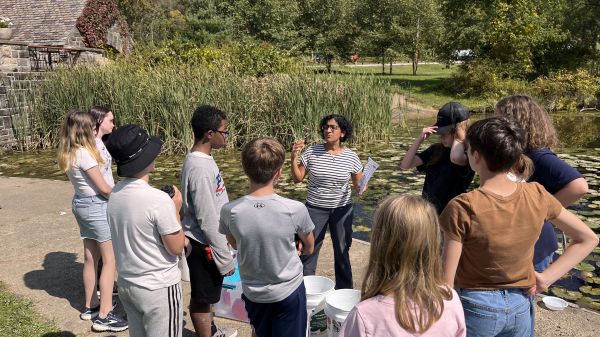
Each month, NAAEE shares narratives from the CEE-Change Fellows as they implement their community action projects and work to strengthen environmental education and civic engagement capabilities, all supporting the mission of cleaner air, land, and water. Join us on their journey! The Civics and Environmental Education (CEE) Change Fellowship is NAAEE’s newest initiative to support leadership and innovation in civics and environmental education in North America. This ee360+ program is a partnership between NAAEE, U.S. EPA, and the Cedar Tree Foundation.
All student names were changed to protect their privacy.
Climate change is a vast and daunting topic. Educators often start with a lesson on greenhouse gases rising through the century and the inevitable rise in average temperatures, followed by a myriad of apocalyptic effects, from devastating storms to drought and famine. Once that lesson is over, the audience is left reeling from the gravity of the situation and feeling powerless to do anything about it. I myself had been plagued by a similar paralysis after first learning about climate change. Fortunately, we now have solutions, involving many sectors that can, together, make an impact on climate change issues while simultaneously making the world a better, more equitable place. As an educator, I wanted to break the problem down into manageable chunks for my students and place them in the driver’s seat as changemakers.
As I was formulating this plan, I read about the CEE-Change Fellowship and knew it would be the perfect incubator for my idea. I submitted my proposal, knowing that at least 50 other professionals with brilliant ideas would be vying for a limited number of spots. Imagine my surprise when I was selected! Attending the fellowship and meeting the fabulous professionals in my cohort has given me a tangible goal to work towards and a group of friends to share the journey.
Engaging Middle Schoolers in My Community Action Project
At the start of the 2023 school year, as part of my work at Communitopia, I created a list of units (Sustainable Steps) to explore with students. Together with three middle school classrooms at two different schools, we explored the Importance of Biodiversity; Environmental Justice Through Art; Birds and Climate Change; Food Systems; and Water and Watersheds. Each unit had a clear intersection with climate change and included an opportunity to take some action toward a solution. Instead of “reinventing the wheel” for curricula, I tailored well-formulated lesson plans to meet the needs of my students. My weekly lessons with the students incorporated time outdoors, either in their schoolyards or through field trips, as often as possible. It was important to keep lessons ‘hands-on’ and real, so I created curricular kits for each unit that included scientific equipment such as tape measures, identification keys, binoculars, games, a vermicompost bin, and water quality test kits. I used these kits, purchased through a generous grant from the Spectroscopy Society of Pittsburgh, to make the lessons come alive.
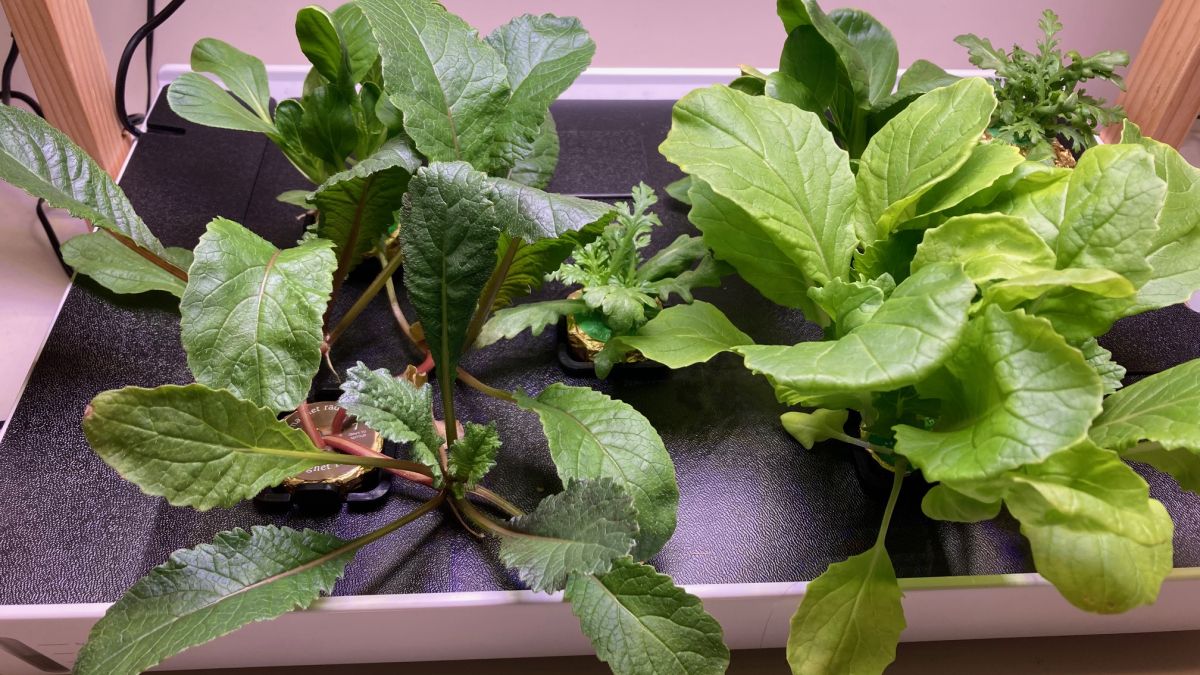
Greens grown by the ECS Climate Action Team in the tabletop hydroponic system. Photo credit: Sarada Sangameswaran
Middle schoolers can be a tough audience, so I tried to keep our meetings fast-paced, hands-on, and authentic. For the unit on food systems, we watched videos on regenerative agriculture, conducted research on food waste, and had students make their own videos or posters on the subtopic of their choice. We started a small hydroponic system, and celebrated our last day of the quarter by making a stir fry in the classroom—miraculously without setting off any fire alarms! Students were incredibly engaged in the simple act of cooking, harvesting the minuscule bok choy from the hydroponic garden, eagerly mixing sauces, and adding veggies to the wok. They ate every morsel of Jasmine rice and vegetables, and everyone came back for seconds. The most taciturn young man in the classroom gave me a smile and a thumbs up!
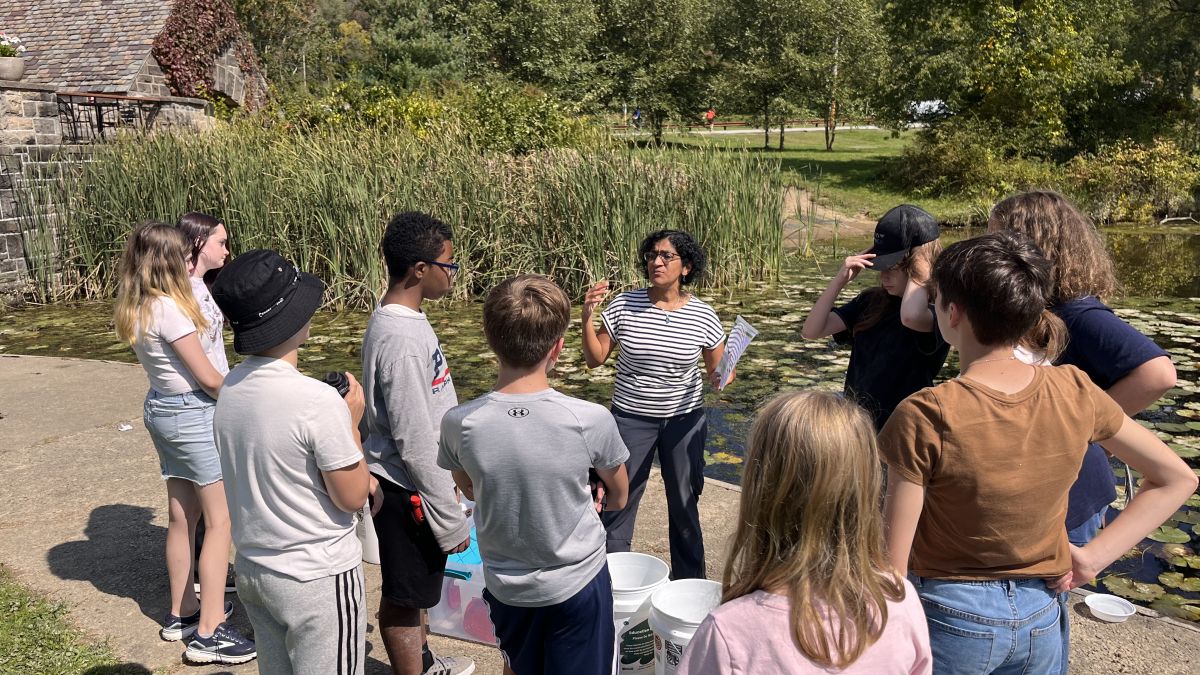
ECS Climate Action Students discuss findings from a water quality study. Photo credit: Sarada Sangameswaran
I have come to realize that students crave material that is novel and goes beyond the pages of a textbook. In the unit on birds, we monitored a Bald Eagle nest camera, with students eagerly gathering around the large screen to make observations and waiting expectantly for the chicks to hatch. While we waited, we learned about birds. On a cold winter day, I pinned photos of birds throughout their classroom walls and had them practice using binoculars as a precursor to a morning of birding outdoors later in the season. Each class created its own bird guide. When the Eagle’s nest ultimately failed, we were all sad, leading to a conversation that I hope cultivated a small seed of empathy in their developing minds.
Celebrating Climate Action Victories (No Matter the Size)
This journey has not been without its challenges. As educators, we often see stories of students making large changes in their schools or communities, from growing flourishing gardens to enacting climate change policy. However, it is not easy to galvanize such change as an outside educator in a nine-week quarter when you only see the students for 40 minutes a week. I have learned to adjust my expectations to what comes organically from the group, knowing that even small actions in middle school can inspire and snowball into bigger actions in the future. What is important is to take some action.

ECS Climate Action Team create sustainable art out of willow branches during a field trip. Photo credit: Sarada Sangameswaran
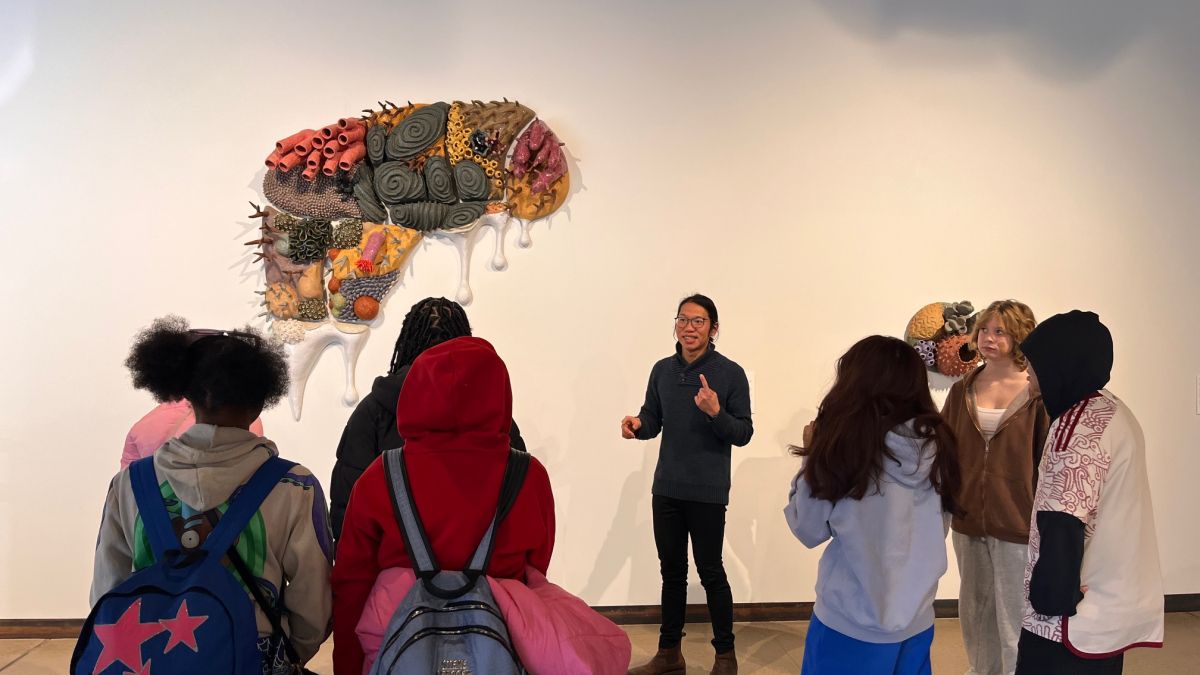
ECS Climate Action Team students enjoy a docent-led tour of the Climate Awakening art exhibit. Photo credit: Sarada Sangameswaran
Change is not easy, and even small victories must be celebrated. Many of my students have tough lived experiences, and school is not necessarily something that they see as relevant to their lives. The biggest joy in this journey has been to see the spark in the students’ eyes as they find something that holds their interest.
Carl, who swears easily and does not pay attention in class, was intrigued by the classroom hydroponic system, eagerly adding water and nutrients. For Mabel, a student with an intellectual disability, eagerly reaching for a set of binoculars is a success. Every time Gray asks me eagerly, “Are we going outside today?” is a win; he would not even look me in the eye early in the school year.
From students vying for my attention to share their stories to kids eagerly devouring vegetables and asking for more, it is the small victories that I hope will help shift their environmental awareness and cascade into something bigger in the future. I know each person in my cohort of the CEE-Change Fellowship is helping make change, and together we cannot but help create a movement. We may not be there to witness the end result of each student's journey, but we have to trust that what we do matters and will lead to a better world.
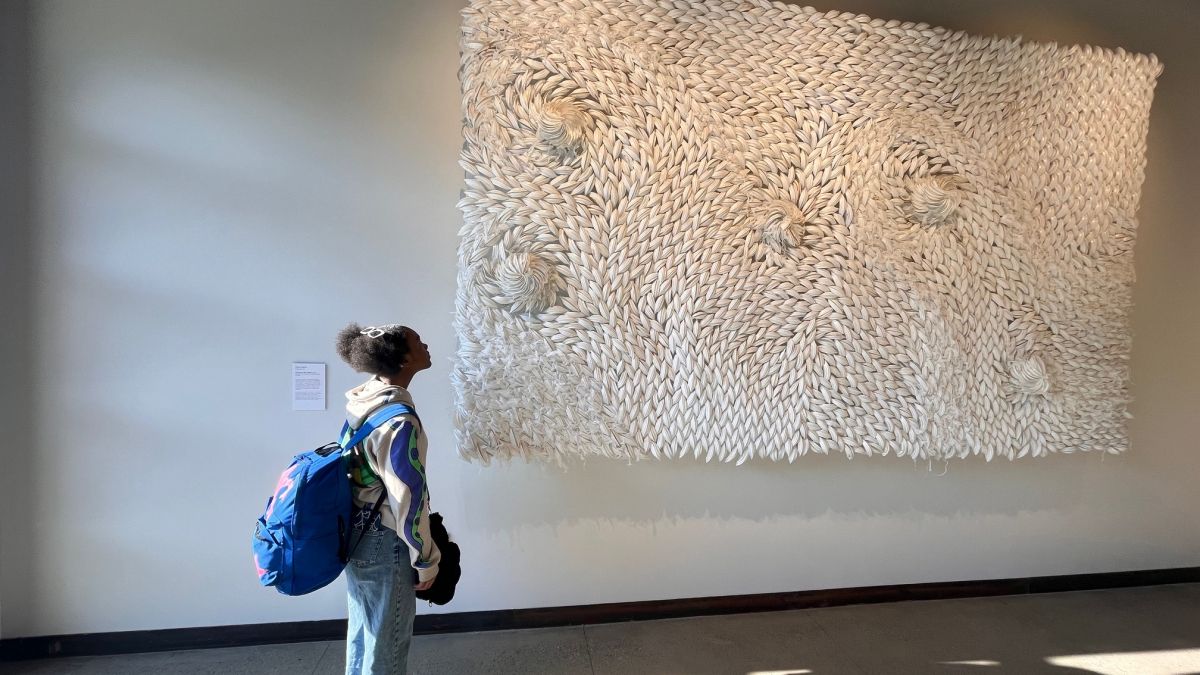
CS Climate Action Student looks at art made with discarded materials. Photo credit: Sarada Sangameswaran